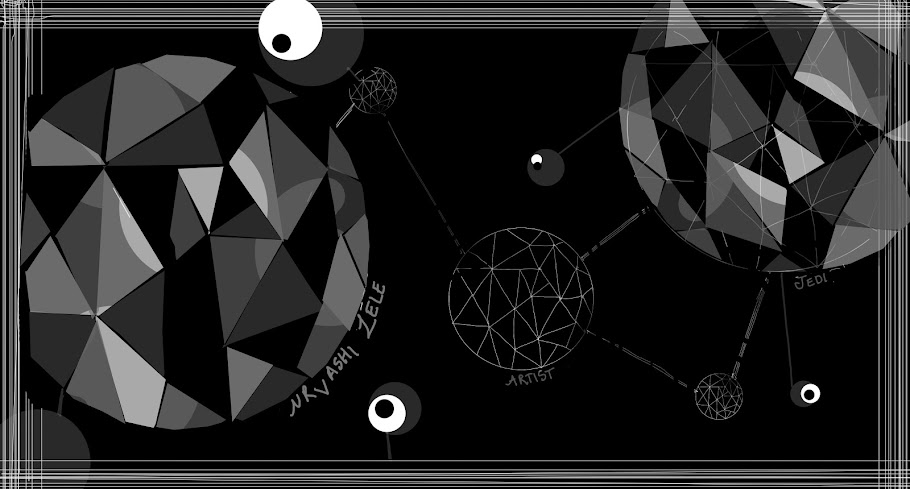There is a curious link between all the drawings. Everything is morphing into something new. As stated in Variety Magazine, "(Idiots and Angels is) closer in drawing style and mood to Plympton's award-winning shorts, with all their grungy metamorphic grotesquerie intact" Many Authors. (2008). Variety Magazine Reviews. Idiots and Angels.
Plympton's work is a tad strange to watch as its colour scheme is rather positive whilst the issues that are dealt with within his films are dark and sometimes gruesome.
 |
| Fig 1: Bill Plympton Himself. |
In his film Idiots and Angels, Plympton portrays his character as an angry arms dealer who flings his alarm clock at chirping birds every morning. This is his conception of a layman.
He portrays the burdens of everyday life in the form of butterfly wings, which grow on the protagonist's back. At first, the character is able to shave them off but they grow bag with increased vigour and the character is made fun of by his piers. As time passes by, the wings begin to possess him and appear to have a will of their own.
 |
| Fig 2: A Still From Idiots and Angels |
The character goes to the doctor who wishes to use the protagonist as a 'medical marvel' and display him to the world in order to become rich and famous. At this point, the protagonist cuts off his wings and disposes them off in the trash. The doctor finds these wings, stitches them onto another person and creates a flying human out of him. Meanwhile, the protagonist grows a new set of wings. All this is portrayed in a surprisingly entertaining way. As reviewer Stephen Holden states, "The film defies expectations"Holden, Stephen. (2010). New York Times Film Review. Misanthrope Sprouts Wings and Humanity.
This film also shows the greed and lust of humans beautifully.
 |
| Fig 3: A Still From The Tune- The Twins |
One might say that Plympton likes getting inside the mind of the characters that he draws. In his film Dog Days, Plympton portrays a dog who imagines different kinds of harm that befall its owner. The artist's style appears to have improved in this film. As reviewer Mike Everleth states, "This one (Dog Days) appears to be an exercise in Plympton broadening his style in both storytelling and in animation technique."Everleth, Mike. (2010). Bad Lit Journal. Bill Plympton's Dog Days
A striking example of rather amazing transformations is in Plympton's short film, The Tune. Another key characteristic feature of Plympton's work is capturing the attention of the audience.
In a scene in The Tune(1992), the protagonist opens a door to a pair of twins who inflict pain upon each other in the most bizarre ways imaginable. This sequence is the most gripping and tense in a strangely humorous fashion.
Bill Plympton takes hand drawn animation to a new level. He uses pencils to create stunning visuals that have a strangely dark humour to them.
He is an artist worth admiring.
Bibliography:
Everleth, Mike. (2010). Bad Lit Journal. Bill Plympton's Dog Days. At: http://www.badlit.com/?p=3033
Holden, Stephen. (2010). New York Times Film Review. Misanthrope Sprouts Wings and Humanity. At: http://www.nytimes.com/2010/10/06/movies/06idiots.html
Many Authors. (2008). Variety Magazine Reviews. Idiots and Angels. At: http://www.variety.com/review/VE1117937044/
Illustration List:
Fig 1: Plympton, Bill. (2008). At: http://ethanclements.blogspot.co.uk/2010/04/animator-and-animation-reviews-bill.html
Fig 2: Plympton, Bill. (2008). Idiots and Angels. At:http://www.filmmakermagazine.com/news/2010/10/bill-plympton-idiots-and-angels/
Fig 3: Plympton, Bill. (2004). The Tune. At: http://thevistor.blogspot.co.uk/2011/03/animation-timeline-bill-plympton-1946.html

No comments:
Post a Comment